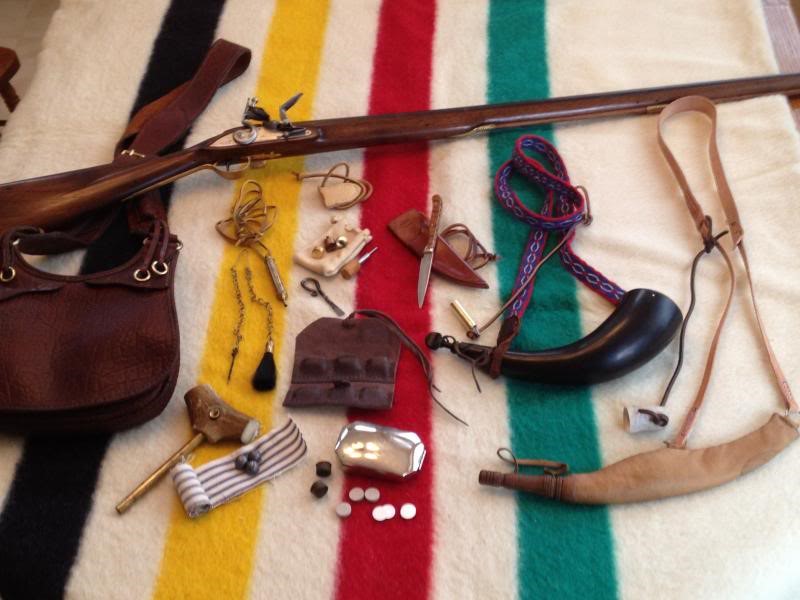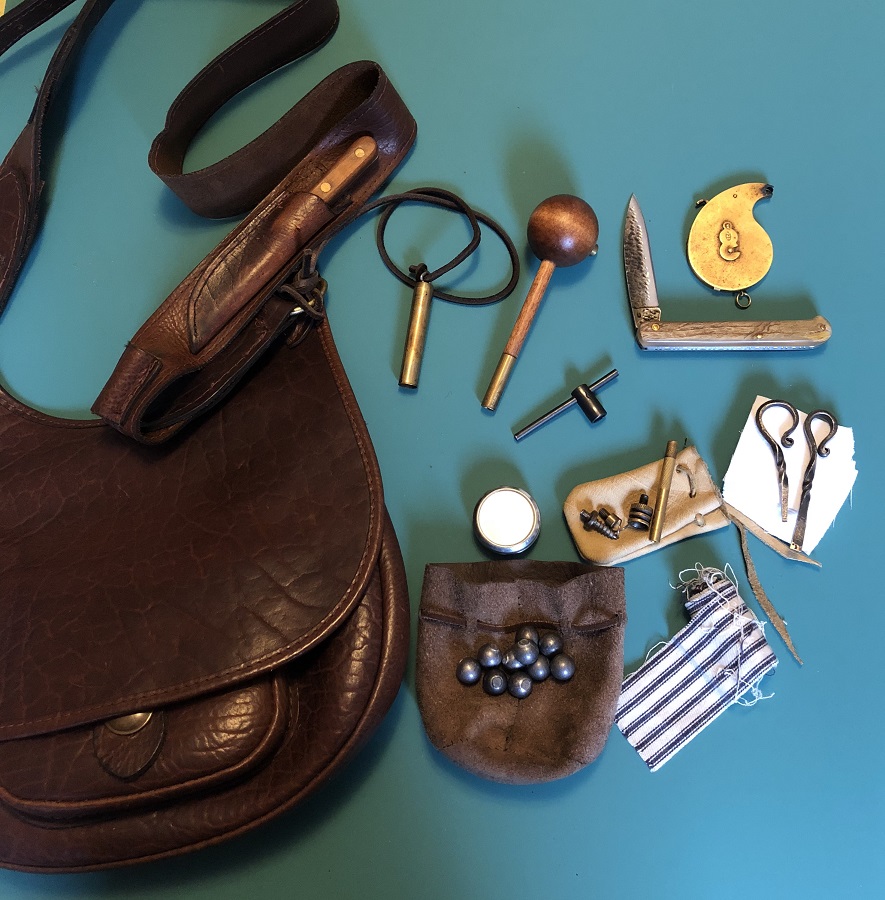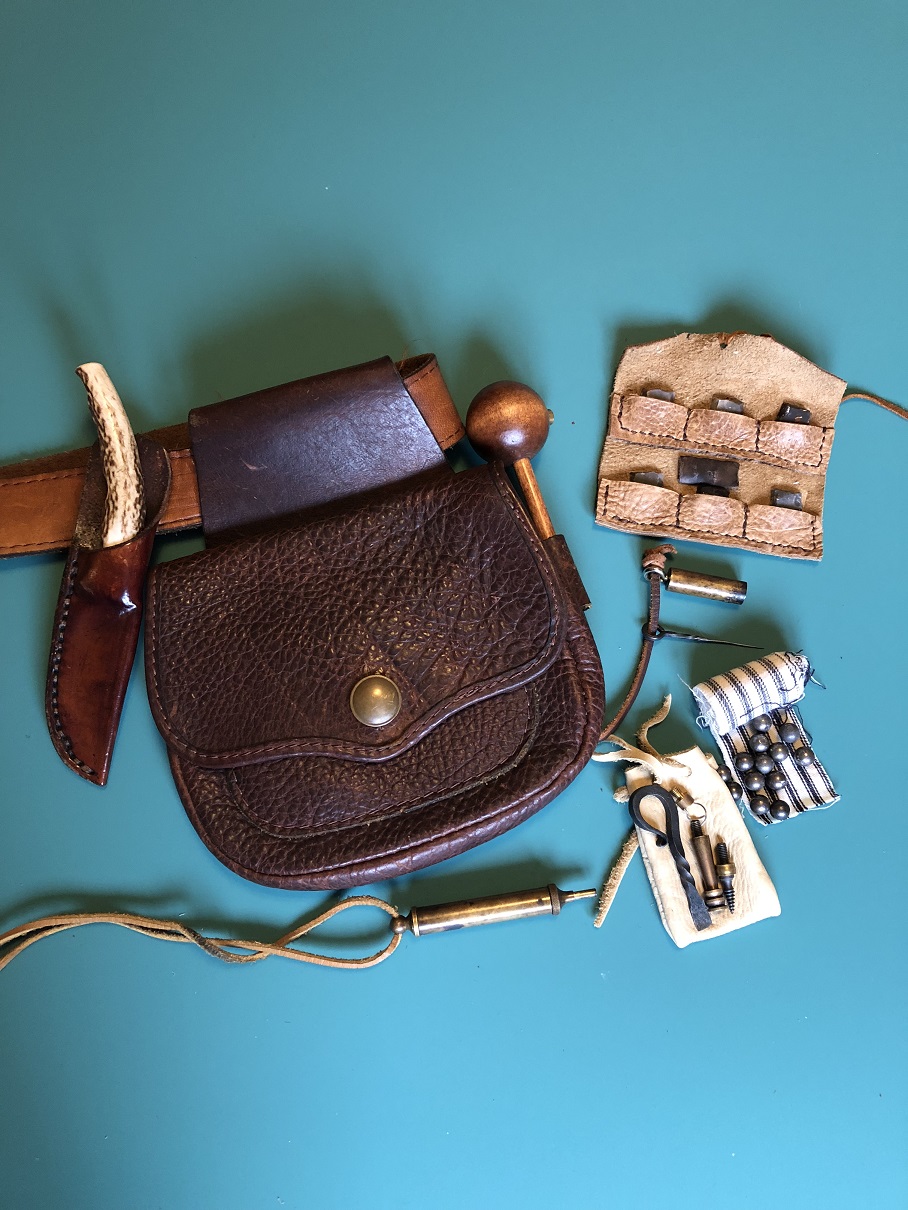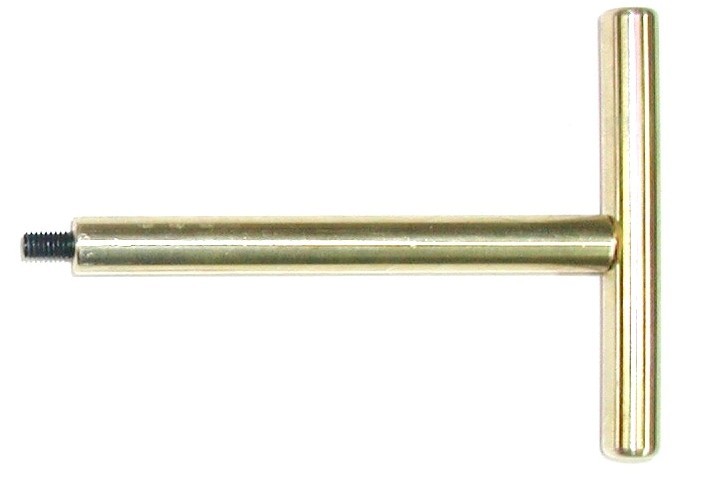The shooting bag is not a possibles bag. It should only contain those items necessary to operate the gun. The goal is to have your accoutrements organized and handy enough that you won’t be fumbling around on the shooting line. When you have it all organized just right you should be able to load your gun with your eyes closed or in the dark of night if necessary. The ability to put your hand on the specific item needed without having to search through the bag for it comes in mighty handy when you are trying to keep your eye on where the deer you just shot is running off to and reload your gun at the same time. To the mountain man, that same ability could save his life when assaulted by a number of Blackfoot Warriors.
The type and caliber of the gun will determine the size and design of your shooting bag. A too small bag over stuffed with items makes it difficult to locate that one thing you need at the moment. A too large bag can be just as frustrating trying to chase a small caliber round ball around in the bottom of a large bag. The accoutrements for a small caliber squirrel rifle can fit nicely into a small belt bag while a large caliber rifle or smoothbore gun will require a bigger bag with perhaps several pockets to organize all the different items needed for loading round ball or shot loads. A wise plan is to gather together all the items necessary to operate your gun before you make or purchase the bag.
 The photo above shows a .62 caliber / 20 gauge Chiefs Grade Trade Gun with the items necessary for a day of shooting or hunting. The bag is made of buffalo leather. It is a commercially made bag with pockets in number, size, and placement which are ideal to organize all the items necessary to load shot or round ball. The contents as they are laid out from top left to bottom right are; pan primer containing 4-f powder. The frizzen stall. Cleaning jag, ball puller, gun worm, and flint knapping tool (contained in a small deer skin bag). Vent pick and pan brush attached with a chain. Screw driver. Flint wallet with spare flints. Short starter. .62 caliber round balls and patching material. Silver tobacco box which holds the lubed shot wads. Over powder cards and over shot cards.
The photo above shows a .62 caliber / 20 gauge Chiefs Grade Trade Gun with the items necessary for a day of shooting or hunting. The bag is made of buffalo leather. It is a commercially made bag with pockets in number, size, and placement which are ideal to organize all the items necessary to load shot or round ball. The contents as they are laid out from top left to bottom right are; pan primer containing 4-f powder. The frizzen stall. Cleaning jag, ball puller, gun worm, and flint knapping tool (contained in a small deer skin bag). Vent pick and pan brush attached with a chain. Screw driver. Flint wallet with spare flints. Short starter. .62 caliber round balls and patching material. Silver tobacco box which holds the lubed shot wads. Over powder cards and over shot cards.
The patch knife in its sheath is worn around the neck. The buffalo powder horn holds approximately one pound of 2-f powder, a brass powder measure is attached to the horns strap. The leather shot snake will hold bird shot or buck shot. The shot measure is attached to its strap. The Trade Gun requires twice as many items as a rifle but using this set up the gun can be loaded for birds or bears, in the dark or while blindfolded.
If you shoot a percussion rifle you will need some type of percussion cap holder. Fancy brass capers work well but a homemade cap holder can be made using a leather punch and a scrap piece of leather. Shape the leather to suit you, it can be round, square, triangular, or just a narrow strip. Punch holes along the edge just large enough to insert a cap and attach it to the strap of your bag or hang it around your neck on a thong. It looks correct and prevents your spilling caps all over the ground trying to retrieve just one out of those ridiculously small and cumbersome tins they are sold in.
The bullet bag and contents for my 54 caliber percussion plains rifle.
 Patch knife attached to strap. powder measure. short starter. folding knife. Ted Cash capper. nipple wrench. tin of percussion caps. deer skin bag containing patch jag, patch worm, ball puller, and nipple pick. turn screws to fit lock and trigger adjustment screws. cleaning patches. ball bag containing 54 calliber balls. ticking patching.
Patch knife attached to strap. powder measure. short starter. folding knife. Ted Cash capper. nipple wrench. tin of percussion caps. deer skin bag containing patch jag, patch worm, ball puller, and nipple pick. turn screws to fit lock and trigger adjustment screws. cleaning patches. ball bag containing 54 calliber balls. ticking patching.
The accoutrements needed for my 40 caliber flintlock rifle fit nicely into this small belt bag.

Patch knife. short starter. flint wallet with extra flints and leather. powder measure and vent pick. ticking patching and 40 caliber balls. turn screw, patch jag, ball puller, and patch worm contained in deer skin bag. pan charger contaning ffffg powder for priming.
Additionally, this brass "T" ramrod extension handle is included in the bag I happen to be using on any particular day for those times when it becomes necessary to pull a ball.

Other items that may be needed for a day hunt such as; lunch, a container of water, compass, fire starting materials, etc. are carried in a separate bag or wallet.
